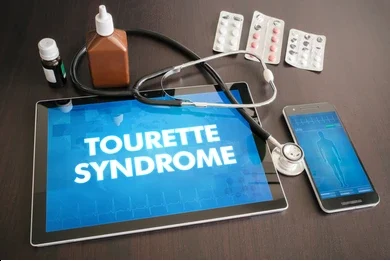Tics are sudden, repetitive movements or sounds that some people make, seemingly without control. These involuntary actions can be simple, like blinking or throat clearing, or more complex, involving several muscle groups or vocalisations. Tics often begin in childhood, but they can persist into adulthood or even emerge later in life. Understanding the various treatments available for tics is essential for managing this condition effectively in children and adults.
Understanding Tics
Tics are often associated with conditions like Tourette Syndrome, a neurological disorder characterised by multiple motor and vocal tics. Tics can also occur independently or as part of other conditions, such as attention-deficit/hyperactivity disorder (ADHD) or obsessive-compulsive disorder (OCD).
- Motor Tics: These involve movements like eye blinking, head jerking, or shoulder shrugging.
- Vocal Tics: These involve sounds such as grunting, coughing, or repeating certain words or phrases.
Tics vary in severity and can significantly impact the quality of life, leading to embarrassment, anxiety, and social challenges. While there is no cure for tics, several treatment options can help manage and reduce their frequency and intensity.
Behavioral Therapy for Tics
Behavioural therapy is often the first line of treatment for tics, especially in children. It focuses on teaching individuals how to manage their tics and reduce their impact on daily life.
1. Comprehensive Behavioral Intervention for Tics (CBIT):
- Overview: CBIT is a well-established therapy that combines relaxation techniques, habit-reversal training, and psychoeducation. It helps individuals become aware of their tics and learn to replace them with more acceptable behaviours.
- Effectiveness: Studies have shown that CBIT can significantly reduce tic severity in both children and adults. It is considered one of the most effective non-medication treatments for tics.
2. Habit-Reversal Training (HRT):
- Overview: HRT is a component of CBIT that involves training individuals to recognise the urge to tic and then engage in a competing response that is incompatible with the tic.
- Effectiveness: HRT is particularly effective in managing motor tics and is often used as a standalone therapy or as part of CBIT.
3. Exposure and Response Prevention (ERP):
- Overview: ERP is another behavioural technique that involves exposing individuals to the situations or feelings that trigger their tics while teaching them to resist the urge to tics.
- Effectiveness: While ERP is commonly used to treat OCD, it can also be effective in reducing tic severity, particularly in individuals with co-occurring OCD.
Medication for Tics
When behavioural therapies alone are insufficient, or when tics are particularly severe, medications may be prescribed to help manage symptoms. The choice of medication depends on the type and severity of the tics, as well as any co-occurring conditions.
1. Alpha-2 Adrenergic Agonists:
- Examples: Clonidine and Guanfacine.
- Overview: These medications are often prescribed as first-line treatments for tics, particularly in children. They work by reducing the levels of norepinephrine, a neurotransmitter involved in stress and arousal, which can help decrease tic frequency.
- Side Effects: Common side effects include drowsiness, dry mouth, and low blood pressure.
2. Antipsychotics:
- Examples: Risperidone, Aripiprazole, and Haloperidol.
- Overview: Antipsychotics are often used for more severe tics that do not respond to other treatments. They work by blocking dopamine receptors in the brain, which can reduce tic severity.
- Side Effects: These medications can have significant side effects, including weight gain, sedation, and movement disorders, so they are usually prescribed with caution.
3. Selective Serotonin Reuptake Inhibitors (SSRIs):
- Examples: Fluoxetine and Sertraline.
- Overview: While SSRIs are primarily used to treat anxiety and depression, they can also help manage tics, particularly in individuals with co-occurring OCD.
- Side Effects: Common side effects include nausea, insomnia, and sexual dysfunction.
4. Botulinum Toxin Injections (Botox):
- Overview: Botox injections can be used to treat specific motor tics, particularly those that are focal and involve only one muscle group. The injections work by temporarily paralysing the muscles responsible for the tics.
- Effectiveness: Botox can be effective in reducing the severity of certain motor tics, but the effects are temporary, and the injections need to be repeated every few months.
Lifestyle and Supportive Treatments
In addition to behavioural therapies and medications, several lifestyle and supportive treatments can help manage tics.
1. Stress Management:
- Overview: Stress is a common trigger for tics, so managing stress through relaxation techniques, such as deep breathing, yoga, and mindfulness, can be beneficial.
- Effectiveness: Regular practice of stress management techniques can help reduce the frequency and severity of tics.
2. Healthy Lifestyle:
- Overview: Maintaining a healthy lifestyle, including regular exercise, a balanced diet, and adequate sleep, can improve overall well-being and help manage tics.
- Effectiveness: While lifestyle changes alone may not eliminate tics, they can help reduce triggers and improve the individual’s ability to cope with their symptoms.
3. Support Groups:
- Overview: Support groups provide a safe space for individuals with tics and their families to share experiences, gain support, and learn about effective coping strategies.
- Effectiveness: Participating in support groups can reduce feelings of isolation and provide valuable emotional support.
4. Educational Interventions:
- Overview: For children with tics, educational interventions can help ensure that they receive appropriate support in school. This may include educating teachers and peers about tics and implementing accommodations to reduce stress and tic triggers in the classroom.
- Effectiveness: Educational interventions can help create a supportive environment that minimises the impact of tics on the child’s academic and social development.
The Role of Nanavati Max Hospital in Tics Treatment
At Nanavati Max Hospital, doctors thoroughly examine the exact causes of tics before deciding upon the most appropriate treatment. If the symptoms are severe and disrupt the patient’s daily routine or normal lifestyle, they recommend the following approaches:
- Medications: Certain medications, including ADHD stimulants, antidepressants, and dopamine blockers, can help alleviate symptoms, though they do not cure the condition. These drugs may cause side effects and their effectiveness can vary from patient to patient, limiting their widespread use.
- Therapy: Patients with tics often undergo behavioural or psychotherapy. Through these therapies, individuals learn habit reversal techniques or behavioural interventions designed to help them consciously replace tics with new, voluntary movements.
- Botox Injections: Botulinum injections, commonly known as Botox, are administered into the muscles to restrict movement, which can reduce the occurrence of tics.
Conclusion
Tics, whether they occur in childhood or adulthood, can be challenging to manage, but with the right treatment approach, individuals can lead fulfilling lives. A combination of behavioural therapies, medications, and lifestyle adjustments provides a robust framework for managing tics. For those seeking expert care, facilities like Nanavati Max Hospital offer comprehensive treatment plans tailored to the needs of both children and adults. By addressing the physical, emotional, and social aspects of tic disorders, these treatments aim to reduce symptoms, enhance quality of life, and provide individuals with the tools they need to manage their condition effectively.


